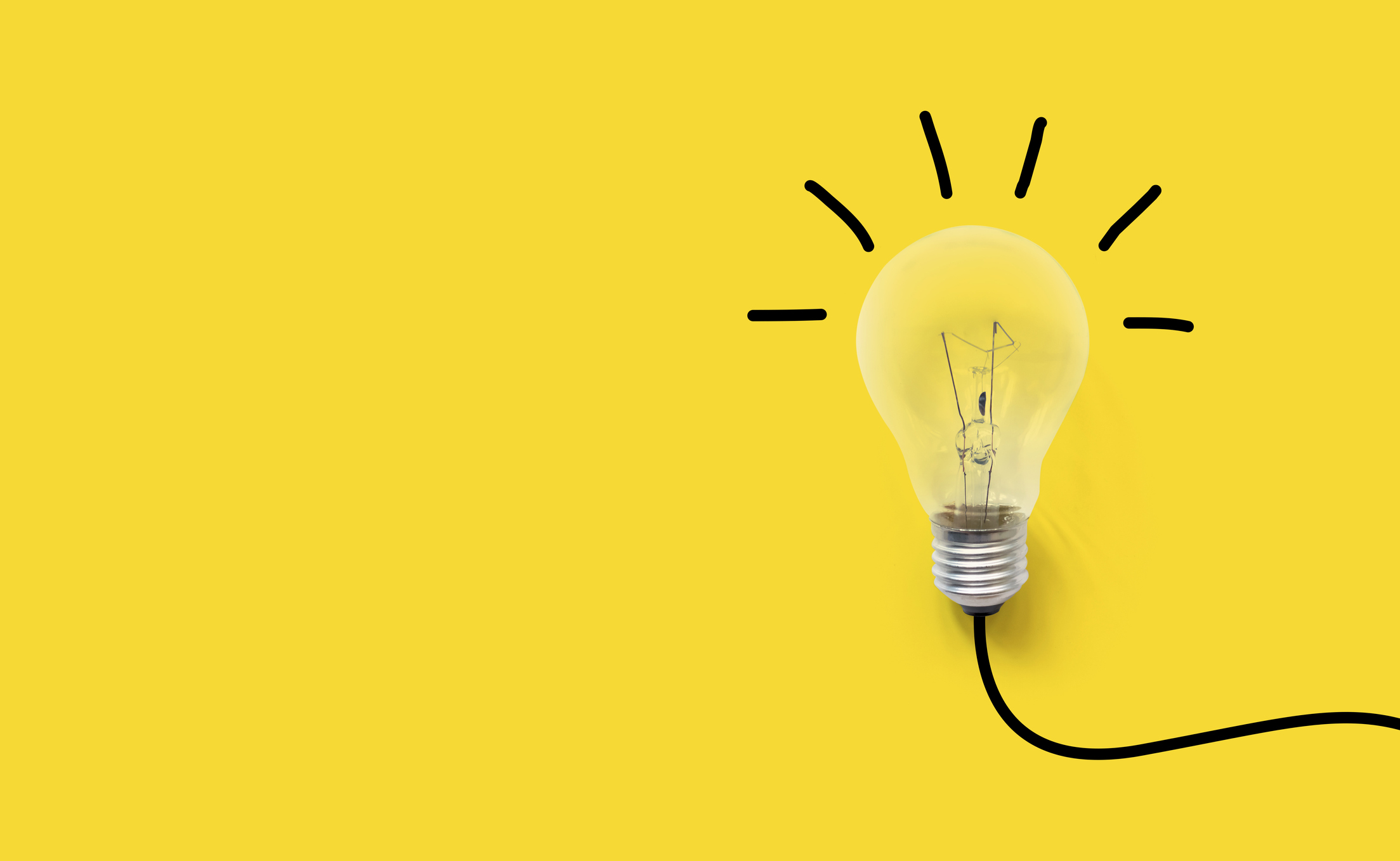
In today’s competitive landscape, acquiring new customers is the table stakes.
Retention is the new growth, so if your business is struggling with retention, be ready to pivot and do something different. If you don't, you won't want to imagine what might happen.
Understanding how to improve user retention for SaaS is increasingly crucial. SaaS companies who are focusing on retaining existing customers instead of acquiring new ones will have a brighter future.
In 2008, Alan Webber predicted the effectiveness of retention on the business. According to Webber, acquiring new customers costs five times more than retaining those you have.
According to the same article, a 2% increase in user retention has the same effect as cutting costs by 10%, while reducing your churn for 5% can result in profit increase by 25-125%.
Without any doubt, improving user retention will definitely help you to not only achieve more profit, but also to acquire more users. This is the moment where we see the correlation between retention and word-of-mouth marketing.
User retention is when a person continuously uses your product, feature, or service.
Before we dive into how to improve user retention for SaaS, let’s talk about some of the data points that indicate the importance of focusing on retention at this moment and see how you fit into the newest retention and churn benchmarks and statistics.
Not so long ago, Patrick, founder of Profitwell - subscription metrics software - analyzed retention and churn of more than 9400 of his customers.
Here are some of his data points that indicate why right now it’s the crucial moment to improve user retention for SaaS, and what are the current retention and churn benchmarks.
One of the most important reasons why it’s important to improve user retention is because the market is no longer your friend.
Right now, one-year-old companies have more than 10 competitors, while companies who are older than five years have 2.6 competitors on average.
As we mentioned above, one of the many obstacles SaaS founders have right now is the Customer Acquisition Cost (CAC). According to ProfitWell, CAC for SaaS companies increased by more than 60% over the course of five years!
So for example, if five years ago your CAC was $100, right now it’s $160. Perhaps this doesn’t sound expensive, but if we include Customer Lifetime Value (LTV) in this data, it’ll only get worse.For instance, if your LTV is $200, and the customers are paying you $100 per month, that means that they are your customers for only two months. If the CAC is $160, it looks like you’re earning barely $40 for two months.
The third, but not the least data point for why it’s important to improve user retention is because customer willingness to pay (WTP) and happiness declined over time.
We as customers are demanding more than four years ago. New and amazing features are not the miracle anymore. According to ProfitWell, WTP declined from 110% to less than 30% in the last four years.
If we’re looking at customer satisfaction and happiness, we will see that customers became quite ungrateful and unhappy. Five years ago, the average NPS score was 33.6, while one year ago, the average NPS was 10.2.To recap all of this, here are the three most important reasons why it’s now more important than ever before to improve user retention for SaaS:
The only profitable way to fight with these obstacles is focusing on user retention.
To know where you stack up, let’s see some of the current retention/churn benchmarks.
Of course, having some churn is unavoidable. Even SaaS companies with the biggest growth don’t have churn 0%.But like anything else, there are some data points and benchmarks where you should belong.According to ProfitWell, here are some interesting retention and churn benchmarks and statistics:
If your question is what's the appropriate churn rate?, the answer is as low as possible.
The appropriate churn depends on a lot of factors. As we’ve seen, the companies that have ARPU per month fewer than $100 will naturally have bigger churn than those who have ARPU bigger than $1000 per month.
Some average churn SaaS companies are facing is between 5-12%.
Now when we know why it’s important to improve user retention for SaaS businesses and what are some current retention and churn benchmarks, it’s time to see 20 effective ideas to improve user retention.
We’ve segmented these 20 ideas into two different groups:
Improving user retention for SaaS businesses is not just about making your users more satisfied. It is also about filling the gaps and reducing the churn on the places where it shouldn’t be.
We will see two different ways on how to prevent the churn from happening. Both of them are more about how to fix dropouts in your signing process than how to retain your existing customers.
In either way, it will help you to boost your customer acquisition and hopefully improve user retention after all.Having that in mind, here are two amazing ideas on how can you improve user retention for SaaS without fighting with it at all.
When you’re landing your potential customers on your landing pages through CTAs and ads, try to make their feelings as enjoyable as possible.
Here are several things you should keep in your mind if you’re looking to improve conversion rates:
Focus on the design of your ads and landing page. Pay attention to the similarity of them. The landing page should deliver the same message in the same design as the ads. That means that your copy, message, design, voice, style, and images should be as similar as possible. Here’s a good example from Health Coach Institute:
Landing Page:
So, the key takeaway is: make your ad and landing page as correlated as possible. Try to keep the same voice, copy, message, and design. If your design and message are very different than your ad, people might feel confused and they would want to leave your website as soon as possible.
What are the common problems your customers are facing? Your goal is to make them addicted to your product, so point our their problems and mention your solution. Here’s a good example that comes from HubSpot:
This landing page is dedicated to their Sales Hub. One of the most common problems Sales Managers are facing is the time sales operations consume. Here, in a clear way, HubSpot points out to their problem and presents them its solution: a product that helps you to save time and automate processes.
Signup flow is one of the most critical aspects of the user journey. It’s the place where your users are actually starting to use your product (or leaving it without trying).
For that reason, it’s crucial to design the signup flow that will suit your customer’s needs.Although this may sound strange, designing the perfect signup flow that suits to your product is the art. It’s not just about creating email and password boxes. It’s much more.There are two most popular signup flows:
Friction-based signup flow requires potential users to fill in more data about themselves in exchange for better user experience later on.
On the other hand, frictionless signup flow is easier to complete, and the companies who are using it are hoping that the UI will add the additional value and onboard users more effectively.
Defining the right type of signup flow is important - since it will help you to easily onboard and retain your users later on.
So, when should you use friction-based signup flow?
Friction-based signup flow is usually used if the product is a little bit more complex and if it requires more information and data about the customer to set it up.
Usually, products that require additional integrations or embedded code snippets will use friction-based signup flows.
A great example of this is FullStory. FullStory is a session-replay software. It’s literally useless if the users don’t embed FullStory’s JavaScript snippet in their application or website.
As you can see, more complex products require more information and data points about the user for giving additional value and crafting better in-app experiences later on.On the other hand, products that are not hard-to-use can implement frictionless signup flow.
So, in what situations should you use frictionless signup flow?
Easy-to-use companies such as different B2C SaaS companies should definitely use frictionless signup flow. It’s also recommended for products that don’t require additional integrations and code snippets.
For this kind of approach, you’re basically backing up at the friendliness of your UI and product.
A good example of frictionless SaaS signup flow comes from Airtable.
As you can see, Airtabable’s UI is so frictionless that users can literally complete it in a matter of 30 seconds.
Once the users create an account, Airtable starts onboarding them with personalized content that fits the particular user personas.
As you can see, choosing the right SaaS signup flow is from crucial importance. It will not just help you to prevent the churn at the beginning of your user journey, it will also help you to set good foundations for the future user onboarding. As we will see later on, user onboarding directly correlates with your product adoption and user retention.
To recap all of this, let’s see what are the disadvantages and advantages of both friction-based and frictionless SaaS signup flow.
User onboarding is the process of teaching your trial (and existing) users on how to use your product. And no, user onboarding isn’t just a product tours.Actually, the traditional product tours that guide users through the entire product and all features are outdated.
There is a whole art of making the perfect user onboarding flow. User onboarding and product adoption don’t just help you to onboard new users and improve trial-to-paid conversions, it also helps you to reduce your churn rates and improve user retention.The more people you’re able to convert at the onboarding stage, the better user retention and less churn you’ll have. On the other hand, if your customers adopt your product better, there are fewer reasons for churn. Simple as that! Before we see some of the best ways to take your user onboarding on the next level and improve user retention for SaaS with it, let’s first see, in a few short paragraphs, what are the most important pillars of user onboarding.
Like everything else, user onboarding needed to evolve. As we mentioned, traditional product tours across the entire product don’t work anymore.Users have a tendency to explore the product on their own. From that reason, traditional product tours are usually skipped.
The new user onboarding we symbolically like to call “user onboarding 2.0”.Long story short, user onboarding 2.0 is going to be subtle. That means, that it should offer help to your users without detracting them.User onboarding 2.0 is mostly based on these pillars:
Now when we see what are the most important parts of the user onboarding 2.0, let’s see how what are the best practices that will help you to both onboarding more users and improve user retention for SaaS.
Let’s get started!
Creating the right user segments is crucial for future user onboarding and product adoption. Every user persona has different goals and needs. Fortunately for us, the modern CRMs and product marketing tools made us easy to create different user segments.
TIP: If you aren't sure what CRM software you should be using during this step of the process, check out our master list!
 Here are the most important in-app user segments you should focus on.
Here are the most important in-app user segments you should focus on.
It’s very important to differentiate new users and existing ones. Both of them require different approaches for the maximum effect and retention.For example, new users will require different and more general user onboarding flows than existing ones.When it comes to onboarding new users, be sure to unleash different “aha!” moments and make them adopt your core features first.
This could be a subsection of the “New users” segment.
These are the new users who registered for your product but still didn’t engage with your core features.This could happen due to a lot of reasons:
Your go-to way to engage with those users is through transactional ways since it’s obvious that they don’t visit your app. Here’s how ClickInsights tries to onboard this user segment:
This user segment is based on different persona traits your users could have. Of course, not all users will use your product because of the same use cases.Some users have different starting points and behaviors that differentiate them from others.
Here are a couple of ideas how can you segment your users by different persona types:
If you’re using value metrics in your pricing plan, you might encounter with users who will use your product for free, forever. Such tools are Trello and Slack.
For these users, it’s important to always try to adapt them to use some of your premium features. This could be either done through the transactional emails or in-app.
The approach to this user segment is very similar like for the lifetime free users.
When you’re trying to market to lifetime free users, you’re actually trying to up-sell them a premium package. Conversely, users with low MRR are already your paying customers, but you need to try to up-sell them even bigger packages.We will talk more about how to up-sell bigger packages for both of these segments later on.
Loyal users are usually the customers that are premium customers and who fell in love with your product. You can usually identify the loyal user through the NPS survey.Your marketing isn’t over when some particular user reaches this segment. When you do, it’s your job to try to convince him that he should promote your product. On this way, you’re creating the organic word-of-mouth marketing.
This is a very important user segment for retention. If you have users that didn’t visit your product in a while, then you can suspect that something is wrong.It doesn’t matter are they your premium or trial users. This could happen for several reasons:
Luckily for us, you can easily re-engage with those users. One of the best ways to do that is through transactional emails.
According to Dan Benoni from Growth Design, Duolingo managed to re-engage with him with this simple email:
So, what’s the secret behind this simple email?
According to Dan, this email is sent at the right time and at the right moment. When Dan received this email, he was at the airport waiting for his plane to Buenos Aires.
This is the perfect example of context-driven onboarding and retention.
This is the moment where you’re stepping into the user onboarding 2.0.
Unlike the traditional user onboarding with general product tours, user onboarding 2.0 is going to be subtle. That means that a lot of in-app experiences should be triggered by the user’s behavior or context.In other words, instead of the one general product tours that lead your users across the entire product, you should create smaller product tours for each important feature.
Let’s take a look at the following example: You have the sales outreach tool, and you would like to onboard your users on how to send outreach campaigns with your product.
You should show tooltips for that feature only after the users import the list of contacts and after they write their email body.
Not before, not later. That’s the power of subtle user onboarding 2.0 that’s fueled with customer’s behaviors and context.In other words, since users like to explore the product on their own, user onboarding 2.0 is only there to show them appropriate in-app experiences when they need them.
Checklists are a great way to let the users know what they should do. It’s an amazing way to assist them in setting up their account and teaching them how to use your product.Even more, checklists are fundamentally based on the Zeigarnik effect - a psychological bias that explains how people have a tendency to better remember uncompleted than completed tasks.
Also, a good example comes from Databox. It makes a normal user to a pro-user and shows the path of how it is done, i.e. from data-aware to data-driven.
If your target customers are a bit casual, you can always use emojis as Skedsocial did for the social media marketers. As marketers, we all love emojis and GIFs.
The less customers have to complete some particular task, the more motivation they will have. It’s natural. Progress bars can find their purpose in almost any aspect of user onboarding and product adoption.
As MailChimp does, you can use them for making easy for users to create an account to specify how much the users will need before they set up an account, or to even show your users how much time can it take for them to reach their goals with your product.
Either way, progress bars can be extremely useful for customer’s motivation.
Psychology is a great way to onboard new users and to improve user retention. Using some of the tactics we will mention right now will help you to take your onboarding, churn and retention on the next level.
A lot of successful SaaS products are based on peer pressure. Twitter, Facebook, Instagram, and all other social media products are also using peer pressure to boost their product-led growth and retention.
If we take LinkedIn for example, it used peer pressure to build the customer base, which helped it to later up-sell the ads, premium plans, Sales Navigator, and many other things.
Peer pressure can also be used as a referral marketing channel. Just remember the famous DropBox’s growth study that was fundamentally built over peer pressure.
Gamification is a powerful way to intrigue your users and motivates them to use your product.
There are various examples of using gamification in your user onboarding. If your business is based on the “credits”, you might wish to create something like Seamless AI did:
This is a great example of using checklists, gamification and progress bars in your user onboarding at the same time.
Without a doubt, people will use and pay for your product if it brings them more value. But to keep them motivated and addicted to your product (so they will use it more often and you can eventually improve user retention), you need to let them feel great experiences.
This is mainly based on the peak-end rule. The psychological bias that explains how people remember experiences.
According to the Peak-end rule, people are remembering experiences by two factors:
The best way to empower user experiences is to celebrate successes.
Following the CRM example from above, for example, you can celebrate the success with your users after they send their first (and any other) outreach campaign. This is the same thing that MailChimp does over the years now:
Success celebration and great experiences can also motivate your customers to share how they feel with their network.
This is how Asana celebrates your tasks and to-dos when they’re done:
Or how Loom wants you to celebrate when you make your first video.
Transactional emails are emails that are triggered by some particular user’s action or time-range.That makes them perfect for onboarding and adoption purposes.
Transactional emails can have numerous use cases in user onboarding. Here are just a couple of them:
Just like Competitors App does, you can boost product adoption and core feature activation with transactional emails.
For Competitors App, if the user doesn’t add the domain, it can’t use the product. From that reason, the team behind Competitors App decided to send this transactional email to the new users.
Razvan Girmacea, the Founder of Competitors App, revealed that this particular email generated over 50% open rates, while more than 30% of those who opened it actually added their domain.
Or, you can use transactional emails to upsell bigger and premium packages to your users.
Different customers need different retention flows. It’s the same as when different customers need different lead conversion strategies.
Long story short, what are the retention flows?
Retention flow is a step-by-step process that helps you to understand why your customers are leaving your product, and what can you do about that.Retention flows are usually based on the set of different user feedback surveys and post-surveys actions (such as offering discounts, changing plans, etc) that will help you to retain your customers.
If your customer still decides to leave, at least you will have valuable feedback that you can use for product improvement.
When the Moz users try to cancel their Moz Pro subscription, they could see this pop up:
If the user still decides to leave, then this feedback modal pops up:
Collecting the feedback is a great way to both improve user retention for SaaS and to achieve word-of-mouth marketing.But, at the end of the day, a lot of users find sending feedback overwhelming and annoying. So, how can it help you to improve user retention?
There is one secret trick to do that. The answer is in the gamified surveys with the incentive.
Instead of just popping up your survey and asking your users for the feedback, try to gamify this process a little bit.As a reward after completing your survey, perhaps your customers can get some free and valuable content (like an ebook), free credits, or a free month of your product?
Eventually, after completing the survey, your customers will be motivated and stick around your product longer, while you can collect valuable feedback and promote the good experiences customers have with your product.
Similar to user onboarding, feature adoption is the process of adopting your customers to use your core and secondary features, such as embedded integrations within your SaaS.
Customers will be more addicted to your product if they are using more features. For that reason, if you want to improve user retention for SaaS, you should focus your strengths on feature adoption.
In some cases, feature adoption is directly correlated with upselling, since for a lot of SaaS companies, more features mean bigger subscription package.
In other words, that means that if you focus your strengths on feature adoption, you can both improve user retention and revenue.Here are several ways how can you improve user retention and feature adoption at the same time.
A good practice is to have a little change log inside your product. It’s usually on the top right corner.Change log gives you the opportunity to automatically, on a subtle way, inform your users about the newest changes, features, releases and deals without distracting them in their work. Slack gives us a good example of how effective a change log could be:
Context-driven actions can be extremely powerful in product adoption.
Subtle user onboarding is based on multiple product tours (that have around 2-4 steps) for each feature.
Let’s see the power of context-driven actions for product adoption on the following example:
You have two features that are in a tight relationship with each other (Feature A and Feature B - where the Feature A is the core feature while Feature B is the secondary feature). In other words, users can use Feature B only if they already activated (and started to use) Feature A.
With this in mind, it doesn’t make sense to show tooltips and product tours about Feature B if the user isn’t familiar with Feature A.
Some natural order is to first adopt the user to use Feature A and then Feature B.
HubSpot has two different features: Preparing the outreach email body and email templates. HubSpot shows the “email templates” feature only when the user is adopted to “creating the email” feature and after it continuously tries to copy/paste the email templates.
In other words, it doesn’t make sense to show “email templates” feature before teaching the users on how to create the email.
Product Marketing (or product-led growth) can be extremely useful when it comes to feature adoption and improving user retention.
In other words, when you market your features both in-app and outside the app, you will not just make your existing customers use your feature, but you will also reach new customers.
Here are a few ways how can you use the power of product marketing to improve user retention for SaaS and feature adoption:
Feature adoption (and product adoption) is all about the imagination. The team behind Drift did an amazing job:
They used the empty space around the Sign in form and re-used it to show some of their features. Really great for feature awareness and adoption.
As we already mentioned, educating your customers is more than important, and it’s directly correlated with user retention.
Webinars are a great way to educate your new and existing users at scale.
For example, you can use webinars to talk about the newest feature release, use cases, to share secret tips and tricks with your tool, and to onboard new users.
Intercom does a great job with webinars. They’re hosting webinars every week for different user segments:
Annual payments are a good growth hack to improve user retention for SaaS. Logically, if someone already paid for the entire year, there are more chances that he will stick around longer. Data from ProfitWell profs this.
According to them, companies who have 0% of annual contracts have churn around 10.40%, while those who have 75-100% of annual contracts have churn around 2.59% on average.
Value metric is what you charge for. For example, we at Userpilot are giving the same product with the same features to all of our users. By they are paying us by the number of Monthly Active Users (MAU) they have. On that way, as our user’s MAU grows, it’s subscription fee also grows by some point.Long story short, people are more likely to pay for what they use, instead of what they don’t use.That means, that if you’re not using the value metrics in your pricing strategy, your customers will usually pay for features that they don’t use.Sometimes, there will be no reason for churn to happen because the people will value what they’re paying for.
Showcasing the people behind the product is always a good option. It will not just personalize your landing page and in-app experiences, but it will also show your potential (and existing) customers that you’re not a robot. It increases the trust.
It will show them that you’re still humans who are more than happy to meet their goals.
Last, but not the least important idea on how to improve user retention for SaaS companies is better customer support. Customer support plays a big role in user retention. Just think about it like this: if a user is frustrated with your product, and there's no good customer support to help them, would they stay with your product or leave?
Improving user retention for SaaS businesses is increasingly important in 2019 and beyond. Make sure you're on track!
Want to learn more? Check out these SaaS optimization tips from the experts!
Aazar Ali Shad is the VP of Growth at Userpilot (an Appcues Alternative) and has more than 5 years of SaaS Experience. He is currently helping 500+ SaaS companies improve user onboarding and increase product adoption.
Long-lasting customer relationships are vital to growing any business.
 by Nupura Ughade
by Nupura Ughade
A company-wide understanding of user/customer engagement should be a standardized,...
 by Nikola Kožuljević
by Nikola Kožuljević
Of all 282 Google product obituaries, Inbox's demise was the most hurtful.
 by Arijit Bose
by Arijit Bose
Long-lasting customer relationships are vital to growing any business.
 by Nupura Ughade
by Nupura Ughade
A company-wide understanding of user/customer engagement should be a standardized,...
 by Nikola Kožuljević
by Nikola Kožuljević


